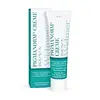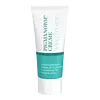What's inside
What's inside
 Key Ingredients
Key Ingredients

 Benefits
Benefits

 Concerns
Concerns

 Ingredients Side-by-side
Ingredients Side-by-side

Hydroquinone 5%
StabilisingTretinoin 0.03%
Skin ConditioningDexamethasone 0.03%
Propylene Glycol 0.3%
HumectantCetyl Alcohol
EmollientMethyl 2,4-Dihydroxybenzoate
Skin ConditioningPropylparaben
PreservativeBHA
AntioxidantBHT
AntioxidantPEG-40 Glyceryl Stearate
EmulsifyingSodium Cetearyl Sulfate
CleansingParaffin
PerfumingIsopropyl Myristate
EmollientPetrolatum
EmollientEthylhexyl Methoxycinnamate
UV AbsorberButyl Methoxydibenzoylmethane
UV AbsorberPanthenol
Skin ConditioningAlcohol Denat.
AntimicrobialCamphor
MaskingTitanium Dioxide
Cosmetic ColorantSorbitol 70%
HumectantTocopheryl Acetate
AntioxidantCitric Acid
BufferingAscorbic Acid
AntioxidantLactic Acid
BufferingDisodium EDTA
Water
Skin ConditioningHydroquinone 5%, Tretinoin 0.03%, Dexamethasone 0.03%, Propylene Glycol 0.3%, Cetyl Alcohol, Methyl 2,4-Dihydroxybenzoate, Propylparaben, BHA, BHT, PEG-40 Glyceryl Stearate, Sodium Cetearyl Sulfate, Paraffin, Isopropyl Myristate, Petrolatum, Ethylhexyl Methoxycinnamate, Butyl Methoxydibenzoylmethane, Panthenol, Alcohol Denat., Camphor, Titanium Dioxide, Sorbitol 70%, Tocopheryl Acetate, Citric Acid, Ascorbic Acid, Lactic Acid, Disodium EDTA, Water
 Reviews
Reviews

Ingredients Explained
These ingredients are found in both products.
Ingredients higher up in an ingredient list are typically present in a larger amount.
Ascorbic Acid is is pure Vitamin C. This form makes up the largest amount of vitamin C found naturally in our skin.
Not only is vitamin C great for your overall health and immune system, it also has plenty of benefits on your skin.
Vitamin C is best used for brightening skin. It improves dark spots, acne scars, and hyperpigmentation. This is because it blocks the process of skin darkening when exposed to UV.
Remember: Vitamin C should not replace sunscreen!
Your skin uses vitamin C to build collagen. Collagen is one key component in having a strong skin barrier and plump skin. Vitamin C also plays a role in regulating collagen, thus making it effective in improving wrinkles and fine lines.
Ascorbic acid shows potent antioxidant activity. As an antioxidant, it helps fight free-radicals. Free-radicals are molecules that may damage your skin cells. These antioxidants also protect skin against UV damage.
The best formulations include Vitamin E and/or ferulic acid. These two ingredients help stabilize and provide a boost in the benefits of ascorbic acid. This is because ascorbic acid becomes unstable when exposed to UV and air. In fact, you can tell your ascorbic acid has oxidized when it turns an orange-yellow color.
Ascorbic acid is generally compatible with other ingredients. However, using ascorbic acid with other active ingredients might cause irritation. Two ingredients: copper ions and benzoyl peroxide, will inactivate ascorbic acid completely.
Read more about other types of Vitamin C:
Foods rich with vitamin C include oranges, strawberries, broccoli, bell peppers, and more. When consuming Vitamin C, your skin receives a portion of the nutrients.
Learn more about Ascorbic AcidHydroquinone is used to treat hyperpigmentation, acne scars, and age spots.
It works by decreasing the melanocytes in your skin. Melanocytes are cells that create melanin (the color pigment in skin).
Be sure to use this ingredient as prescribed by your doctor. Wearing sunscreen is also a must (you should be wearing sunscreen anyway!).
Most hydroquinone prescriptions are not to be used for longer than 3 months. Long term usage can cause ochronosis, or a condition in which the skin darkens more than before.
This ingredient is banned in the EU for being skin sensitizer. In the US, this ingredient is not allowed for over-the-counter sale.
However, it is still possible to get hydroquinone in the EU, US, Canada, Australia, and Japan from a doctor's prescription.
There is no known research backing this ingredient to be carcinogenic in humans.
Check out the European alternative to hydroquinone here.
Gentle reminder that all skin tones are beautiful!
Learn more about HydroquinoneIsopropyl Myristate is an emollient, thickening agent, and texture enhancer. It is created from isopropyl alcohol and myristic acid.
It is used to help other ingredients be better absorbed. It is also an emollient and may help soften and hydrate the skin.
The comedogenic rating of this ingredient depends on the concentration. Lower amounts results in a lower rating.
Isopropyl Myristate may not be fungal acne safe. It can potentially worsen acne prone skin.
Learn more about Isopropyl MyristateParaffin is a solid created from petroleum. The term 'paraffin' can also refer to either
petroleum jelly or mineral oil.
It has natural occlusive properties which can worsen oily skin. Due to its petrolatum base, this ingredient is not fungal-acne safe.
Water. It's the most common cosmetic ingredient of all. You'll usually see it at the top of ingredient lists, meaning that it makes up the largest part of the product.
So why is it so popular? Water most often acts as a solvent - this means that it helps dissolve other ingredients into the formulation.
You'll also recognize water as that liquid we all need to stay alive. If you see this, drink a glass of water. Stay hydrated!
Learn more about WaterTretinoin is the best retinoid due to its proven skin benefits. It only available with a prescription in many countries.
All retinoids goes through a conversion line until it can become effective. The final step of conversion is retinoic acid; retinoic acid IS Tretinoin.
This is why tretinoin is so effective; it gets to work immediately on the skin.
Research on tretinoin has found it to be incredibly effective for reducing the signs of aging. It helps improve damage from the sun, even the skin tone, and smooth out wrinkles. It is also an effective acne treatment by reducing and balancing out sebum production in pores.
Tretinoin, like other forms of Vitamin A, increases the turnover cycle of skin cells. This helps the skin create newer and healthier skin cells faster.
It can cause irritation, redness, and dry skin because it is considered a "strong" ingredient. Those with sensitive skin should consult a professional about using tretinoin.
Using retinoids will increase sun-sensitivity in the first few weeks of use. Though studies show retinoids increase your skin's natural SPF with continuous use, it is best to always wear sunscreen and sun-protection.
Read about a form of retinoid you can purchase at the store, retinol.
Learn more about Tretinoin